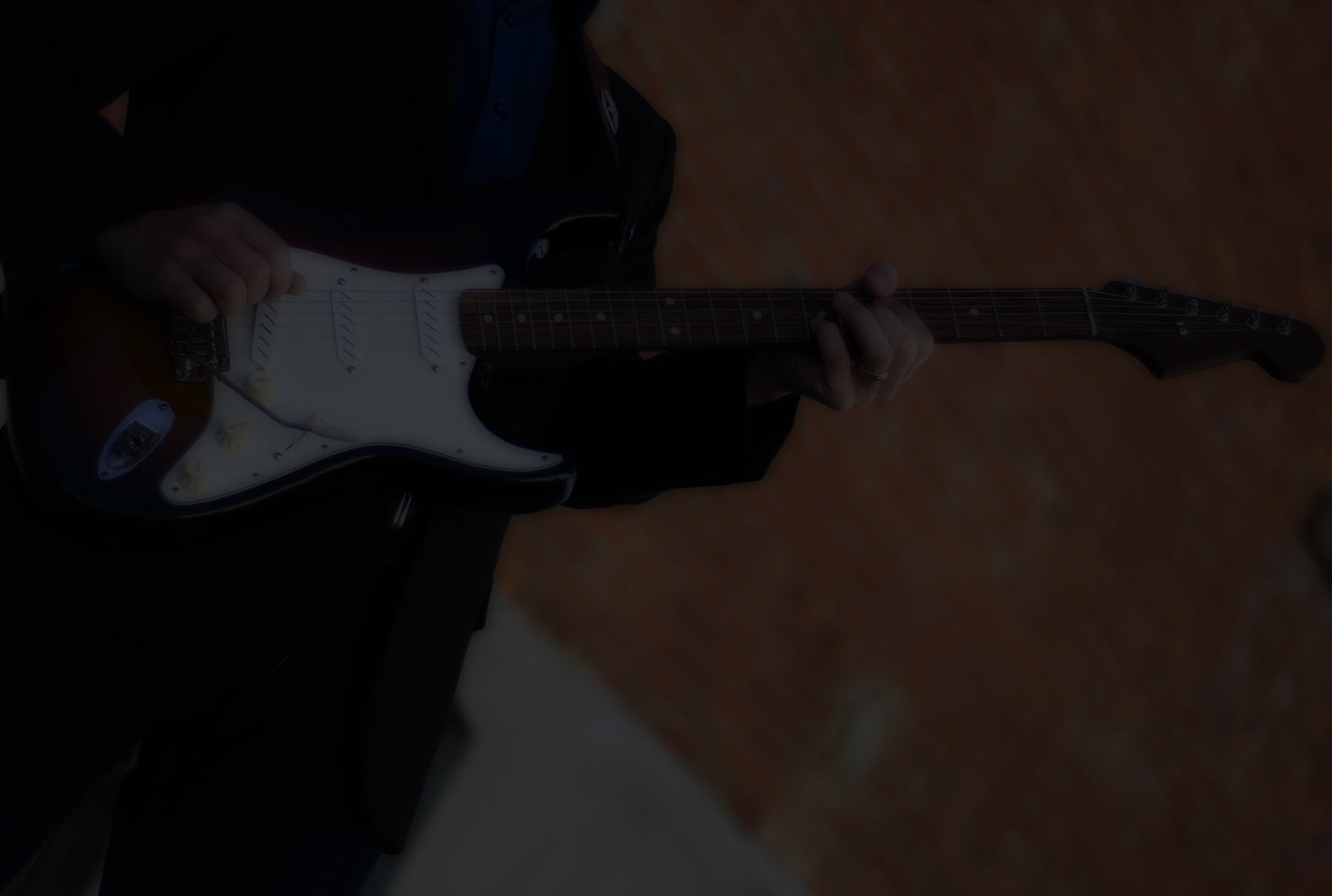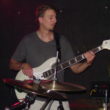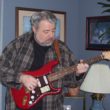12-21-2020 until 12-27-2020
Clayton recommended that I should have a look at St. James Infirmary Blues and encouraged me to make my own backing tracks.
"St James Infirmary Blues" is such an inspiring lesson and will take me months to discover all.
First time that I played the A7, Gm and Bb7 bar chords. Really hard work. It’s important for me to continually keep working on bar chords to play them properly.
I learned the first 8 bars of melody 1. Instead of holding on the notes I tried to play vibratos, for practice only, but it doesn’t sound really good.
I used the 12th street overdrive pedal: tone (high) and gain (low to medium)
My recording:
1st track: I strum the chord progression
2nd track : my very first and very simple!!!! drum pattern with Hydrogen Drum Machine
3rd track: playing the melody
The result is very rudimentary but my first attempt.
Oh YES, that's the way you do it, Birgit. Fantastic!
You have a good feel for the timing and emotion. Such good work.
Well done! You are on the way! Nice that you also did the rhythm... AND Drums!! You are bringing it all together...Keep it up!
12-27-2020 until 01-03-2021
This week I practiced Robert’s St. James Infirmary Arpeggios. I like this solo very much because I love playing chord tones.
This is a really good practice solo for me to focus on my old habit playing the notes too short. I always listen to Robert’s solo and record myself to compare and learn.
This habit is really stubborn and I still need a lot of exercise.
Very challenging :
- bar 3 and 4 where I have to jump from fret 17 to 13 (12) on the low E string playing 8th notes.
- where I have to play the high E string and the B string successively with the index finger respectively with the pinky and trying to play smooth at the same time.
- bar 8 where I have to play fret 12 and 13 on the low E, A and D string.
I changed the solo a little bit playing vibratos over the Dm and A7 chords during the second part of the bars. So I can combine holding the 8th notes longer and practicing vibratos.
I played the solo over Robert’s St James Infirmary backing track.
Birgit,
Nice job! You continue to move along in your progress. Well done!
I think one of the valuable aspects of recording ourselves is to review precious recording in order to see how we are progressing. Perhaps you have been reviewing your previous recordings. If so, I think you will see how far you have progressed in the last 3 months or so!.
Keep it up!
Thank you Chris. And, yes, recording ourselves is such a valuable practice tool. And I think whoever has worked with recording, would not want to abandon that tool. And the other thing: When I came to MGA in August 2020, I never had used a metronome nor a backing track before! That was something totally new for me. Hardly conceivable for me now.
And I’m so glad that Robert always insists on using a metronome and a backing track.
@jestme is so right about your progress. And what I hear is a love and commitment to the craft. You are hard at work finding your space and voice, and the maturity of patience with developing art is an essential element that the see and hear in your practice commitment.
Metronome:. Once I viewed it as an aid and partner to play with, trying different ways to accent or emphasize beats, then I was having fun, rather than facing the task master of that infernal relentless click reminding me of my limits. There are so many ways to play with the beats and space in between, and it's a great game to find those sounds.
In my own experience, we can lose the feel when biting off too much, worrying about the next note in a multiple bar solo or phrase. Take three or four notes from your study and work them with obsession. Play them until you own those notes and can make them sound the ways you want. Yes, WAYS, not just the way the solo sounds. Explore that combination of notes over the backing or beat and find the other sounds, long notes, short notes, loud, soft, two notes, bending notes, oh so many ways to say things.
Thank you so much for your impressive description. You always encourage me to be more creative with the licks of a song I’m learning!
For a short while I’m now working with a few notes of Robert’s A minor blues solo A-01 finding, as you say, WAYS to express myself. It’s really surprising how I come into a flow the longer I play with only a few notes over a backing track. And yes, it’s also a good way to practice bendings, slides and so on.
In my next practice log entry I’ll present a short phrasing study.
Thanks Birgit
Always a pleasure to share some experiences. It Sounds like you are exploring and finding Your sounds!
For anyone reading this, we often get stuck between the technical skills of picking, fretting, fretboard mapping and timing Versus the Art of making a soulful sound and expression of our hearts and thoughts on the instrument. It is Very difficult to get Both Skills and Sounds together. We sure know it when we see those inspirational players make it look easy and sound good. SO, I believe we should spend time just making sounds and becoming close friends with our instrument. This guitar is an instrument, a means of expressing your sound. Take time to leave the performance and just find ways to make sounds in different times and techniques. Have Fun.
Then you'll have some new freedom and familiarity when you try that next song, chord, solo or lick.
@birgit, I'm very impressed with your backing track chords to accompany your St James Infirmary solo. Let us know if playing the rhythm track first helps you find a better space when it came to practicing the solo.
St James rhythm It's like the beginning to a New Orleans funeral march. Slow, sad, heavy, hanging. It's a difficult and intimate sound laden with sorrow and resignation of loss. When we find the rhythm foundation we learn the lay of the landscape, the weave of the canvas upon which we paint.
It’s the first time that I played a rhythm track and the first time that I played the Am, Gm and Bb7 bar chords. So I don’t play them properly in the recording.
But much more important is exactly what you said: Playing the rhythm track first is a very good preparation for practicing the solo. You’ve told me that many times before !!! And I have to admit, you are absolutely right: it’s a MUST. And you have so many years of experience.
After working on the rhythm track and playing the chords, it’s like my ears «opened up» and I can hear the chord changes far more intensively than before. It’s amazing. It really helps practicing the solo and anticipating the chord changes.
Good job!
I also recommend insert a pause here and there. Just take a random 8th note but continue all the other ones. Give that a try and let us know how it goes?
01-04-2021 until 01-10-2021
Last week I promised Clayton to present a short phrasing study with licks from Robert’s A minor blues solo A01.
Phrasing is completely new to me. But it’s really fun and I’m learning a lot!
I took lick 1 and 4 and made a take.
The first thing I noticed after my recording is, that I didn’t began phrasing on the off-beats. I should focus on this to get more variation.
And Robert, I tried it:
I took the St James Infirmary Arpeggio as I did last time with the vibratos and additionally skipped 8th notes. In the beginning it was really difficult for me but I tried and tried to get a reasonable result. It's not perfect but again: I learned a lot !
Very nice Birgit! Could you try this too - sing along with your phrases and melodies. Try to use your mouth to verbalize some phrases - then copy those with your guitar. It's a great way to be more melodic.
I think I might do another solo over this tune! I find the current solos for this lesson could be more fun.
Thank you Robert, and a new solo over this tune with more fun and a little bit more light-hearted would be great!
Thanks Birgit





